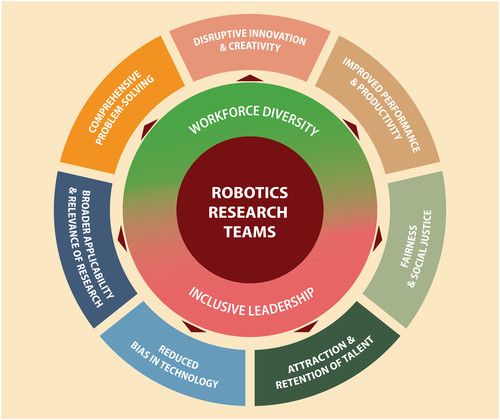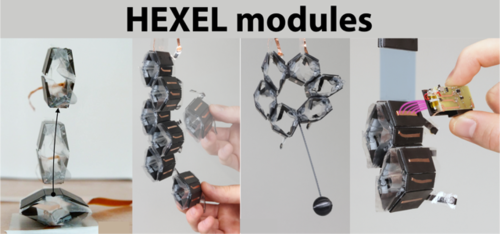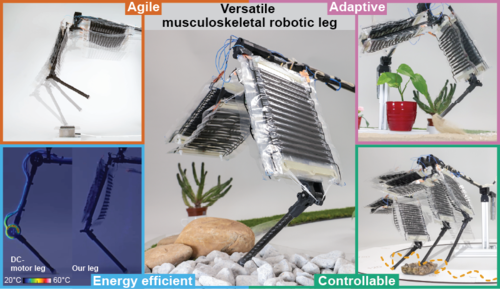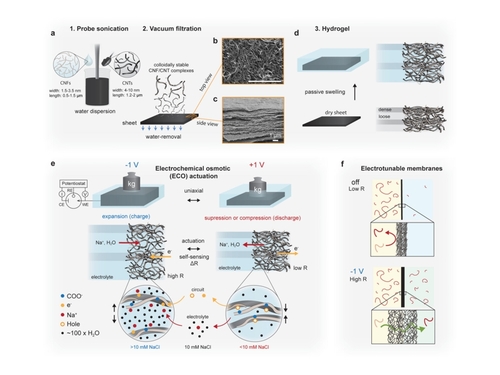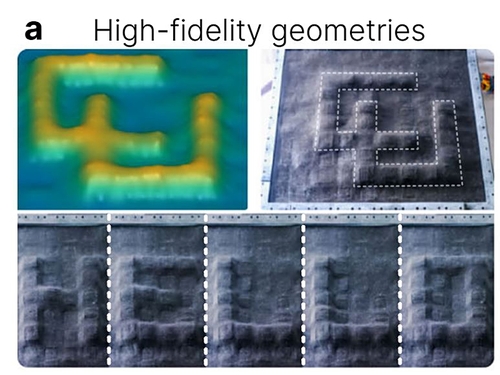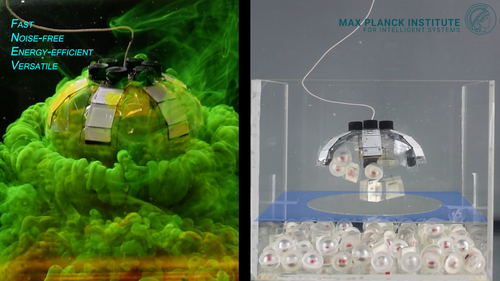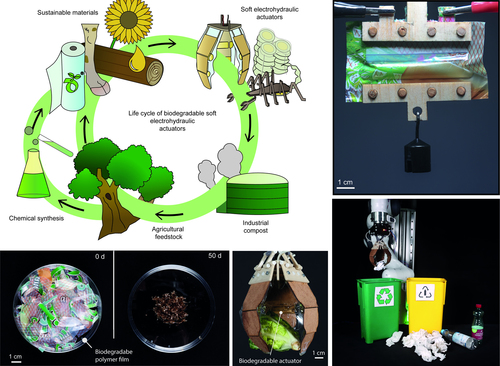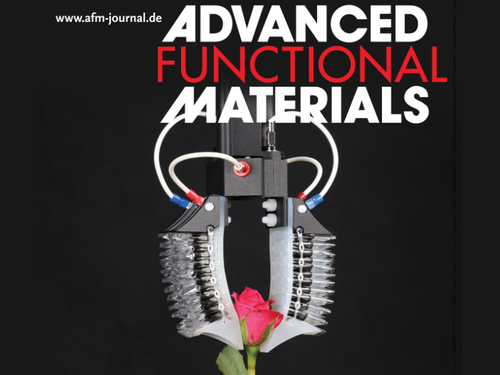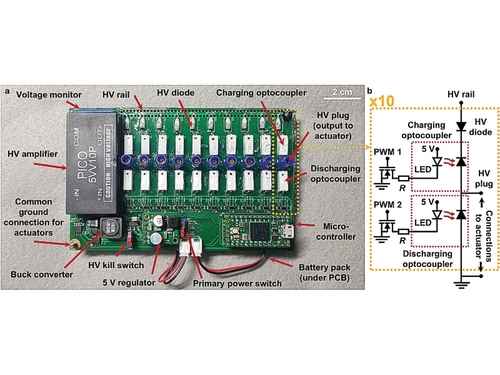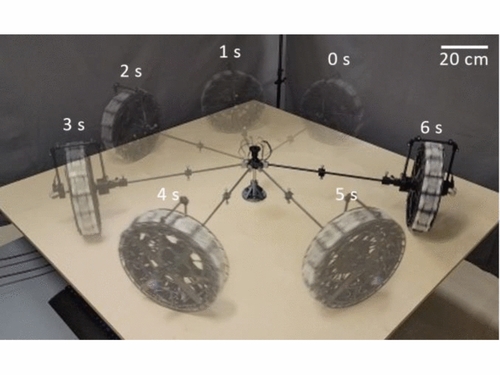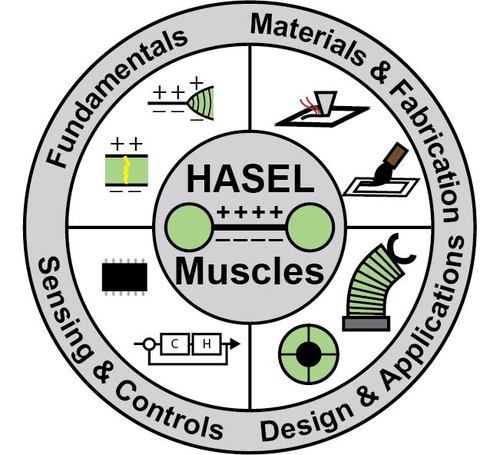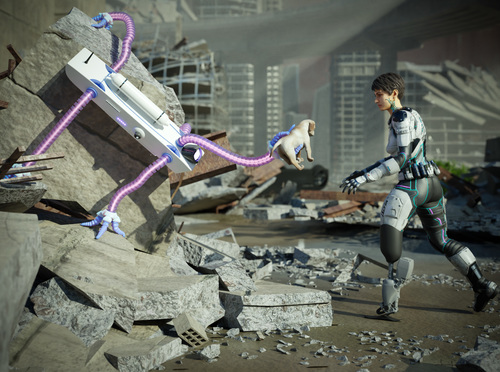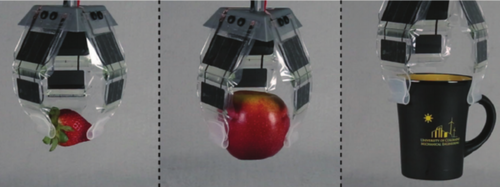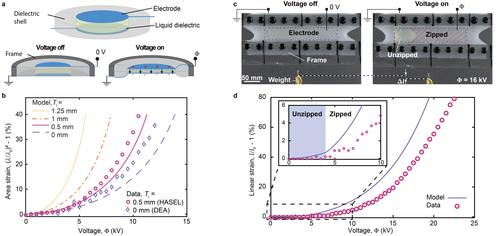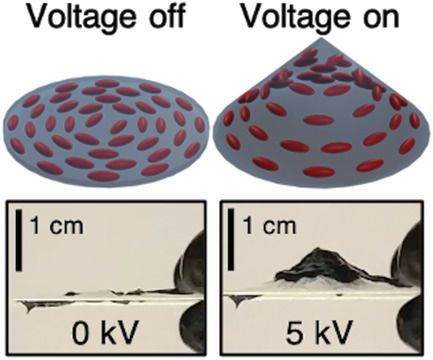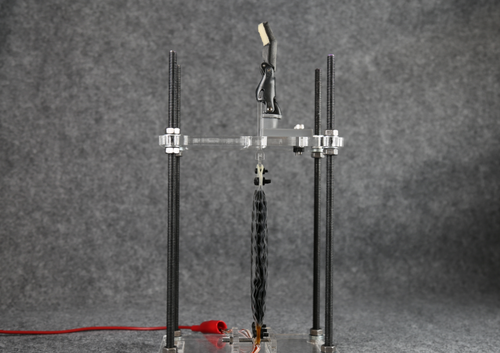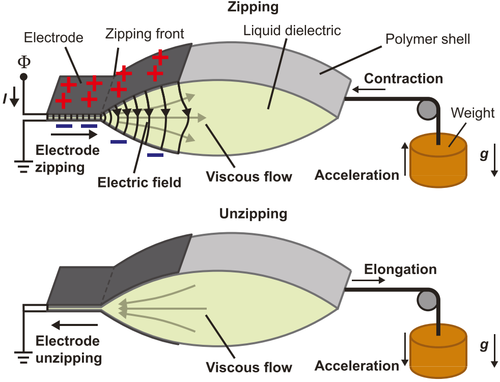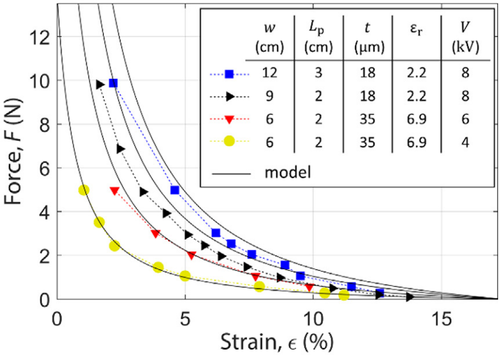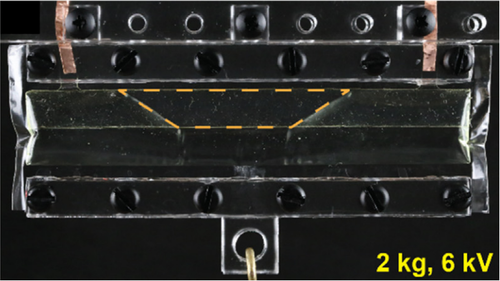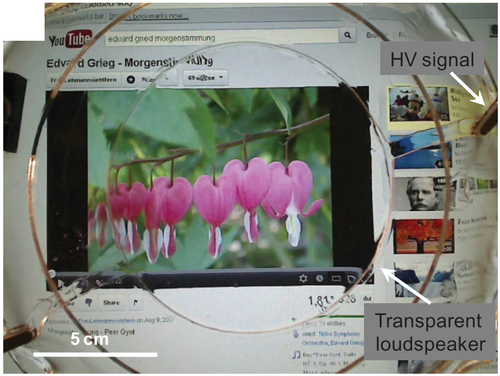2024
Macari, D., Fratzl, A., Keplinger, K., Keplinger, C.
Accelerating the pace of innovation in robotics by fostering diversity and inclusive leadership
Science Robotics, 9, December 2024 (article)
Yoder, Z., Rumley, E., Schmidt, I., Rothemund, P., Keplinger, C.
Hexagonal electrohydraulic modules for rapidly reconfigurable high-speed robots
Science Robotics, 9, September 2024 (article)
Sanchez-Tamayo, N., Yoder, Z., Rothemund, P., Ballardini, G., Keplinger, C., Kuchenbecker, K. J.
Cutaneous Electrohydraulic (CUTE) Wearable Devices for Pleasant Broad-Bandwidth Haptic Cues
Advanced Science, (2402461):1-14, September 2024 (article)
Buchner, T. J. K., Fukushima, T., Kazemipour, A., Gravert, S., Prairie, M., Romanescu, P., Arm, P., Zhang, Y., Wang, X., Zhang, S. L., Walter, J., Keplinger, C., Katzschmann, R. K.
Electrohydraulic Musculoskeletal Robotic Leg for Agile, Adaptive, yet Energy-Efficient Locomotion
Nature Communications, 15(1), September 2024 (article)
2023
Benselfelt, T., Shakya, J., Rothemund, P., Lindström, S. B., Piper, A., Winkler, T. E., Hajian, A., Wågberg, L., Keplinger, C., Hamedi, M. M.
Electrochemically Controlled Hydrogels with Electrotunable Permeability and Uniaxial Actuation
Advanced Materials, 35(45):2303255, Wiley-VCH GmbH, November 2023 (article)
Johnson, B. K., Naris, M., Sundaram, V., Volchko, A., Ly, K., Mitchell, S. K., Acome, E., Kellaris, N., Keplinger, C., Correll, N., Humbert, J. S., Rentschler, M. E.
A Multifunctional Soft Robotic Shape Display with High-speed Actuation, Sensing, and Control
Nature Communications, 14(1), July 2023 (article)
Wang, T., Joo, H., Song, S., Hu, W., Keplinger, C., Sitti, M.
A Versatile Jellyfish-Like Robotic Platform for Effective Underwater Propulsion and Manipulation
Science Advances, 9(15), American Association for the Advancement of Science, April 2023, Tianlu Wang and Hyeong-Joon Joo contributed equally to this work. (article)
Rumley, E. H., Preninger, D., Shagan-Shomron, A., Rothemund, P., Hartmann, F., Baumgartner, M., Kellaris, N., Stojanovic, A., Yoder, Z., Karrer, B., Keplinger, C., Kaltenbrunner, M.
Biodegradable Electrohydraulic Actuators for Sustainable Soft Robots
Science Advances, 9(12), 2023, Ellen H. Rumley and David Preninger were co-first authors, and Christoph Keplinger and Martin Kaltenbrunner were shared corresponding authors. (article)
Yoder, Z., Macari, D., Kleinwaks, G., Schmidt, I., Acome, E., Keplinger, C.
A Soft, Fast and Versatile Electrohydraulic Gripper with Capacitive Object Size Detection
Advanced Functional Materials, 23(3):2209080, 2023 (article)
2022
Mitchell, S. K., Martin, T., Keplinger, C.
A Pocket‐Sized Ten‐Channel High Voltage Power Supply for Soft Electrostatic Actuators
Advanced Materials Technologies, 7(8), August 2022 (article)
Ly, K., Mayekar, J. V., Aguasvivas, S., Keplinger, C., Rentschler, M. E., Correll, N.
Electro-hydraulic Rolling Soft Wheel: Design, Hybrid Dynamic Modeling, and Model Predictive Control
IEEE Transactions on Robotics, 38(5):3044-3063, IEEE, May 2022 (article)
Aubin, C. A., Gorissen, B., Milana, E., Buskohl, P. R., Lazarus, N., Slipher, G. A., Keplinger, C., Bongard, J., Iida, F., Lewis, J. A., Shepherd, R. F.
Towards Enduring Autonomous Robots via Embodied Energy
Nature, 602(7897):393-402, 2022 (article)
2021
Ly, K., Kellaris, N., McMorris, D., Johnson, B. K., Acome, E., Sundaram, V., Naris, M., Humbert, J. S., Rentschler, M. E., Keplinger, C., Correll, N.
Miniaturized Circuitry for Capacitive Self-sensing and Closed-loop Control of Soft Electrostatic Transducers
Soft Robotics, 8(6):673-686, Mary Ann Liebert, Inc., publishers, December 2021 (article)
Wang, Y., Liu, X., Wang, Y., Wang, H., Wang, H., Zhang, S. L., Zhao, T., Xu, M., Wang, Z. L.
Flexible Seaweed-Like Triboelectric Nanogenerator as a Wave Energy Harvester Powering Marine Internet of Things
ACS Nano, 15(10):15700-15709, October 2021 (article)
Rothemund, P., Kellaris, N., Mitchell, S. K., Acome, E., Keplinger, C.
HASEL Artificial Muscles for a New Generation of Lifelike Robots—Recent Progress and Future Opportunities
Advanced Materials, 33(19):2003375, 2021, Nicholas Kellaris, Shane K. Mitchell, and Eric Acome contributed equally to this publication. (article)
Wang, Y., Liu, D., Hu, Z., Chen, T., Zhang, Z., Wang, H., Du, T., Zhang, S. L., Zhao, Z., Zhou, T., Xu, M.
A Triboelectric-Nanogenerator-Based Gas–Solid Two-Phase Flow Sensor for Pneumatic Conveying System Detecting
Advanced Materials Technologies, 6(5):2001270, 2021 (article)
Rothemund, P., Kim, Y., Heisser, R. H., Zhao, X., Shepherd, R. F., Keplinger, C.
Shaping the future of robotics through materials innovation
Nature Materials, 20(12):1582-1587, 2021 (article)
Kellaris, N., Rothemund, P., Zeng, Y., Mitchell, S. K., Smith, G. M., Jayaram, K., Keplinger, C.
Spider-Inspired Electrohydraulic Actuators for Fast, Soft-Actuated Joints
Advanced Science, 8(14):2100916, 2021 (article)
Kirkman, S., Rothemund, P., Acome, E., Keplinger, C.
Electromechanics of Planar HASEL Actuators
Extreme Mechanics Letters, 48, pages: 101408, 2021 (article)
Fowler, H. E., Rothemund, P., Keplinger, C., White, T. J.
Liquid Crystal Elastomers with Enhanced Directional Actuation to Electric Fields
Advanced Materials, 33(43):2103806, 2021 (article)
2020
Yoder, Z., Kellaris, N., Chase-Markopoulou, C., Ricken, D., Mitchell, S. K., Emmett, M. B., Segil, J., Keplinger, C.
Design of a High-Speed Prosthetic Finger Driven by Peano-HASEL Actuators
Frontiers in Robotics and AI, 7, pages: 586216, Frontiers, November 2020 (article)
Ly, K., Kellaris, N., McMorris, D., Johnson, B. K., Acome, E., Sundaram, V., Naris, M., Humbert, J. S., Rentschler, M. E., Keplinger, C., Correll, N.
Miniaturized circuitry for capacitive self-sensing and closed-loop control of soft electrostatic transducers
Soft Robotics, Mary Ann Liebert, Inc., publishers, October 2020 (article)
O’Neill, M. R., Acome, E., Bakarich, S., Mitchell, S. K., Timko, J., Keplinger, C., Shepherd, R. F.
Rapid 3D Printing of Electrohydraulic (HASEL) Tentacle Actuators
Advanced Functional Materials, 30(40):2005244, August 2020 (article)
Baumgartner, R., Kogler, A., Stadlbauer, J. M., Foo, C. C., Kaltseis, R., Baumgartner, M., Mao, G., Keplinger, C., Koh, S. J. A., Arnold, N., Suo, Z., Kaltenbrunner, M., Bauer, S.
A Lesson from Plants: High‐Speed Soft Robotic Actuators
Advanced Materials, 7(5):1903391, March 2020 (article)
Johnson, B. K., Sundaram, V., Naris, M., Acome, E., Ly, K., Correll, N., Keplinger, C., Humbert, J. S., Rentschler, M. E.
Identification and Control of a Nonlinear Soft Actuator and Sensor System
IEEE Robotics and Automation Letters, 5(3):3783-3790, March 2020 (article)
Wang, X., Mitchell, S. K., Rumley, E. H., Rothemund, P., Keplinger, C.
High-Strain Peano-HASEL Actuators
Advanced Functional Materials, 30(7):1908821, 2020 (article)
Rothemund, P., Kirkman, S., Keplinger, C.
Dynamics of Electrohydraulic Soft Actuators
Proceedings of the National Academy of Sciences of the United States of America, 117(28):16207-16213, 2020 (article)
2019
Mitchell, S. K., Wang, X., Acome, E., Martin, T., Ly, K., Kellaris, N., Venkata, V. G., Keplinger, C.
An Easy‐to‐Implement Toolkit to Create Versatile and High‐Performance HASEL Actuators for Untethered Soft Robots
Advanced Science, 6(14):1900178, June 2019 (article)
Morrissey, T. G., Mitchell, S. K., Jaros, A. T., Ambos, E., Keplinger, C.
Mechanical‐to‐Electrical Energy Conversion with Variable Electric Double Layers
Energy Technology, 7(4):1801007, WILEY-VCH, March 2019 (article)
Panwar, S., Gandhi, U., Acome, E., Keplinger, C., Rowe, M.
Simulation-driven design to reduce pull-in voltage of donut HASEL actuators
Proceedings of SPIE, 10966, pages: 1096622, SPIE, March 2019 (article)
Kellaris, N., Venkata, V. G., Rothemund, P., Keplinger, C.
An Analytical Model for the Design of Peano-HASEL Actuators with Drastically Improved Performance
Extreme Mechanics Letters, 29, pages: 100449, 2019 (article)
Rothemund, P., Kellaris, N., Keplinger, C.
How Inhomogeneous Zipping Increases the Force Output of Peano-HASEL Actuators
Extreme Mechanics Letters, 31, pages: 100542, 2019 (article)
2018
Oh, I., Keplinger, C., Cui, J., Chen, J., Whitesides, G. M., Aizenberg, J., Hu, Y.
Dynamically actuated liquid‐infused poroelastic film with precise control over droplet dynamics
Advanced Functional Materials, 28(39):1802632, September 2018 (article)
Kellaris, N., Venkata, V. G., Smith, G. M., Mitchell, S. K., Keplinger, C.
Peano-HASEL actuators: Muscle-mimetic, electrohydraulic transducers that linearly contract on activation
Science Robotics, 3(14):eaar3276, 2018 (article)
Acome, E., Mitchell, S. K., Morrissey, T., Emmett, M., Benjamin, C., King, M., Radakovitz, M., Keplinger, C.
Hydraulically amplified self-healing electrostatic actuators with muscle-like performance
Science, 359(6371):61-65, 2018 (article)
2017
Koh, S. J. A., Keplinger, C., Kaltseis, R., Foo, C., Baumgartner, R., Bauer, S., Suo, Z.
High-performance electromechanical transduction using laterally-constrained dielectric elastomers part I: Actuation processes
Journal of the Mechanics and Physics of Solids, 105(105):81-94, Pergamon, August 2017 (article)
Cao, Y., Morrissey, T. G., Acome, E., Allec, S. I., Wong, B. M., Keplinger, C., Wang, C.
A transparent, self‐healing, highly stretchable ionic conductor
Advanced Materials, 29(10):1605099, 2017, Y.C. and T.G.M. contributed equally to this work. (article)
2016
Yang, D., Verma, M. S., So, J., Mosadegh, B., Keplinger, C., Lee, B., Khashai, F., Lossner, E., Suo, Z., Whitesides, G. M.
Buckling Pneumatic Linear Actuators Inspired by Muscle
Advanced Materials Technologies, 1(3):1600055, June 2016 (article)
Li, C., Wang, C., Keplinger, C., Zuo, J., Jin, L., Sun, Y., Zheng, P., Cao, Y., Lissel, F., Linder, C., You, X., Bao, Z.
A Highly Stretchable Autonomous Self-Healing Elastomer
Nature Chemistry, 8, pages: 618-624 , April 2016 (article)
2015
Lessing, J., Morin, S. A., Keplinger, C., Tayi, A. S., Whitesides, G. M.
Stretchable Conductive Composites Based on Metal Wools for Use as Electrical Vias in Soft Devices
Advanced Functional Materials, 25(9):1418-1425, March 2015 (article)
2014
Sun, J., Keplinger, C., Whitesides, G. M., Suo, Z.
Ionic Skin
Advanced Materials, 26(45):7608-7614, December 2014 (article)
Lessing, J., Glavan, A. C., Walker, S. B., Keplinger, C., Lewis, J. A., Whitesides, G. M.
Inkjet Printing of Conductive Inks with High Lateral Resolution on Omniphobic RF Paper for Paper-Based Electronics and MEMS
Advanced Materials, 26(27):4677-4682, July 2014 (article)
Kaltseis, R., Keplinger, C., Koh, S. J. A., Baumgartner, R., Goh, Y. F., Ng, W. H., Kogler, A., Tröls, A., Foo, C. C., Suo, Z., Bauer, S.
Natural Rubber for Sustainable High-Power Electrical Energy Generation
RSC Advances, 4(53):27905-27913, June 2014 (article)
Martinez, R. V., Glavan, A. C., Keplinger, C., Oyetibo, A. I., Whitesides, G. M.
Soft Actuators and Robots that Are Resistant to Mechanical Damage
Advanced Functional Materials, 24(20):3003-3010, May 2014 (article)
Mosadegh, B., Polygerinos, P., Keplinger, C., Wennstedt, S., Shepherd, R. F., Gupta, U., Shim, J., Bertoldi, K., Walsh, C. J., Whitesides, G. M.
Pneumatic Networks for Soft Robotics that Actuate Rapidly
Advanced Functional Materials, 24(15):2163-2170, April 2014 (article)
Lu, T., Keplinger, C., Arnold, N., Bauer, S., Suo, Z.
Charge Localization Instability in a Highly Deformable Dielectric Elastomer
Applied Physics Letters, 104(2):022905, January 2014 (article)
Bauer, S., Bauer‐Gogonea, S., Graz, I., Kaltenbrunner, M., Keplinger, C., Schwödiauer, R.
25th Anniversary Article: A Soft Future: From Robots and Sensor Skin to Energy Harvesters
Advanced Materials, 26(1):149-162, January 2014 (article)
2013
Li, T., Keplinger, C., Baumgartner, R., Bauer, S., Yang, W., Suo, Z.
Giant Voltage-Induced Deformation in Dielectric Elastomers Near the Verge of Snap-Through Instability
Journal of the Mechanics and Physics of Solids, 61(2):611-628, February 2013 (article)
Keplinger, C., Sun, J., Foo, C. C., Rothemund, P., Whitesides, G. M., Suo, Z.
Stretchable, Transparent, Ionic Conductors
Science, 341(6149):984-987, 2013, Christoph Keplinger and Jeong-Yun Sun contributed equally to this publication (article)
2012
Keplinger, C., Li, T., Baumgartner, R., Suo, Z., Bauer, S.
Harnessing Snap-Through Instability in Soft Dielectrics to Achieve Giant Voltage-Triggered Deformation
Soft Matter, 8(2):285-288, October 2012 (article)

